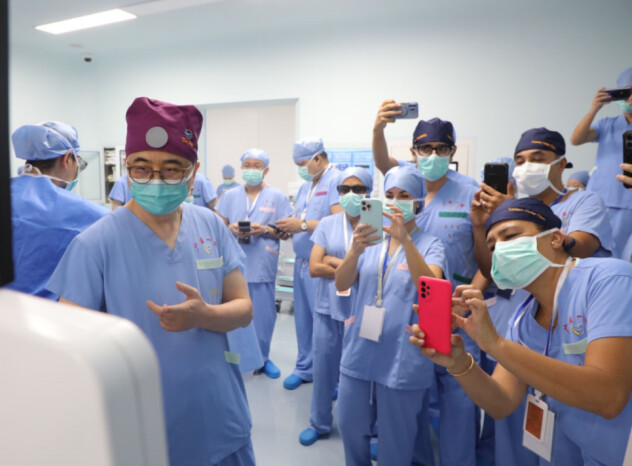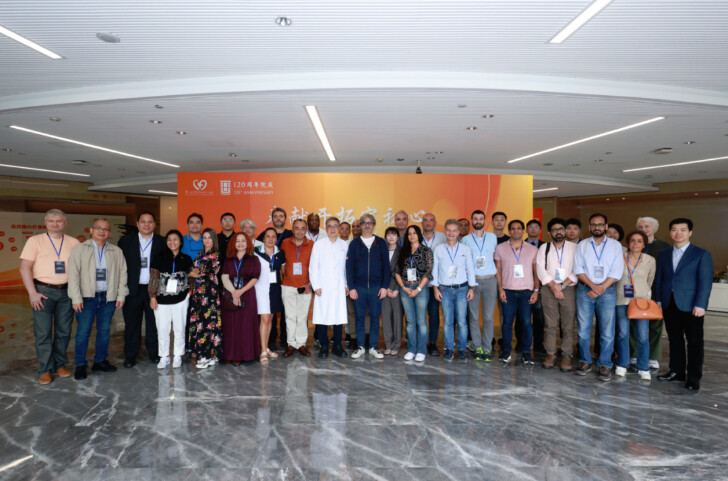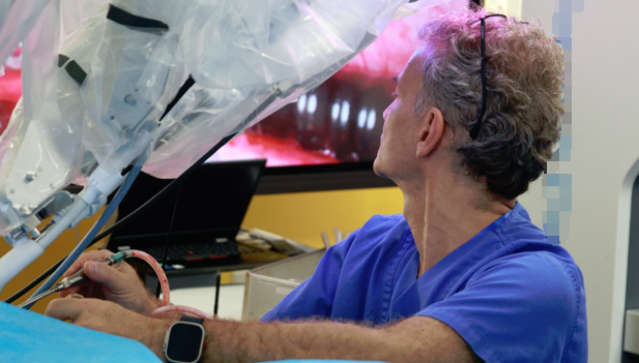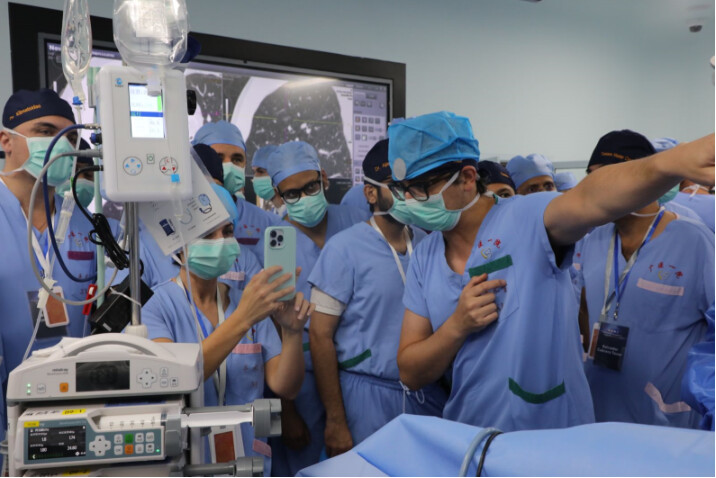From October 20 to 22, the 24th Tubeless Thoracic Master Class (Global Edition) gathered 34 renowned medical experts from 30 medical centers across the UK, Spain, Australia, and other countries at the First Affiliated Hospital of Guangzhou Medical University and the National Center for Respiratory Medicine.
International medical practitioners observed and experienced the "Chinese Solution" in minimally invasive thoracic surgery—the Tubeless and Metaverse thoracic surgery technique, an international innovation pioneered by the team led by Professor He Jianxing.
Tubeless technology refers to tubeless thoracic surgery under spontaneous breathing anesthesia. During the surgery, patients maintain spontaneous breathing, significantly reducing postoperative complications and the use of intraoperative sedatives, muscle relaxants, and other drugs, as well as the side effects of anesthesia procedures.

"The class not only showcases technological strides, but also serves as a summit of exchanges among thoracic surgeons globally," stated Professor He Jianxing. He hopes that by incorporating these innovative techniques into practical surgical demonstrations, trainees can personally experience the direction of future developments in thoracic surgery.
Dr. Michael Klimatsidas, a thoracic surgeon from Greece who visited China for the first time, had seen videos of tubeless technology on YouTube and was curious about it. After witnessing its real-world application, he said, "This is the first time that I've seen a good operation like that. It's very impressive."
He marveled at the role of this technology in lung transplantation. He believed that since no instruments are inserted through the trachea and anesthesia is not administered heavily, patients can recover more quickly.

Ronald Madarang, an anesthesiologist from the Philippines, said he was interested in this tubeless technique recommended by surgeons at his hospital. During his visit to China, the modern cityscape and friendly people of Guangzhou left a deep impression on him.
"It went beyond my expectations!" The tubeless technology amazed him even more. "When the patient is breathing spontaneously, with fewer drugs being given, the surgeon will feel relaxed and the patient will remain stable throughout the procedure, resulting in an overall better experience. This is a much better technique for the patient, for the surgeon, and for the anesthesiologist."
Dr. Tias Diah from Indonesia was deeply impressed by the rapid development and continuous innovation of medical technologies in China. "The application of tubeless technology is very unusual for us, but it's usual here."
When asked whether she would bring these new techniques back to her country, Dr. Diaz responded, "Absolutely. These technologies are new to us, but we will definitely give them a try. We might start with simpler surgeries or cases and gradually expand their application. I believe these new techniques will bring better treatment outcomes and less suffering to our patients."


During the training, participants also observed the independently developed naked-eye 3D surgical display system, which provides surgeons with a more intuitive view through high-definition imaging and precise operational control.
This masterclass specially invited the globally renowned thoracic surgery expert, Professor Diego Gonzalez Rivas, who shared his extensive experience in single-port robotic thoracic surgery.
Reporter | Abby
Photo | First Affiliated Hospital of Guangzhou Medical University
Editor | Nan, James
















